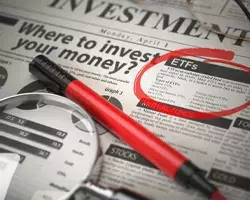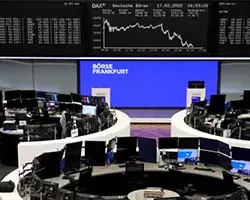Yen Weakens, and USD/CHF Steadies Amid Economic Uncertainty
Key events: USA - Average Hourly Earnings (MoM) (Dec) USA - Nonfarm Payrolls (Dec) USA - Unemployment Rate (Dec) Wednesday’s stock market saw a narrowly mixed outcome following the downturn on Tuesday. The Nasdaq maintained crucial support levels, while Nvidia (NVDA) managed to stay above key thresholds after its sharp decline earlier in the week. On Wednesday evening, Nvidia's shares dipped slightly due to reports that the Biden administration plans to intensify restrictions on chip exports once more.
How US Interest Rates Influence Global Markets: Currency Pairs, Stocks, and Strategies
US interest rates hold a critical position in the global financial system, acting as a benchmark that influences economies and markets far beyond American borders. These rates, set by the Federal Reserve, dictate the cost of borrowing and the return on savings, shaping consumer spending, business investments, and economic growth. However, their impact doesn’t stop at the US economy. In a world where financial markets are deeply interconnected, changes in US interest rates send shockwaves across global markets, affecting everything from currency pairs to stock prices.
Your Path to Stock Market Success: Beginner’s Essentials
Did you know that over the past century, the average annual return of the stock market has been around 10%? This impressive statistic highlights the stock market's potential as a powerful vehicle for wealth accumulation. With millions of individual investors participating worldwide, the stock market remains a cornerstone of personal finance.
Mixed Signals and Rate Speculations Dominate Investor Sentiment | Daily Market Analysis
Key events: Canada - New Housing Price Index (MoM) (Jul) On Friday, the US stock market presented a mixed picture, reflecting a situation where signs of resilience in the US economy are simultaneously fueling concerns about the prolonged maintenance of elevated interest rates. The Dow Jones Industrial Average demonstrated a modest rise of 30 points, equivalent to a 0.1% increase. Conversely, the S&P 500 experienced a slight dip of 0.2%, and the NASDAQ Composite saw a more notable decrease of 0.5%.
Long Position vs. Short Position: What's the Difference?
The tried and true formula for successful sales, "buy low, sell high," applies equally to financial markets. Traders use various types of transactions to achieve this, including short positions (betting that the price will go down) and long positions (betting that the price will go up). These strategies are commonly referred to as "short" and "long" in professional circles. This article will explain the meaning of these terms, their purposes, and how they work.
Exchange Traded Funds (ETF) - Meaning, Types, Benefits
ETF funds may become a good alternative to stocks for those who have just turned their attention to earning on the stock market. We have decided to find out what ETFs are worth choosing, how much can be earned from them, and what are the pros and cons of these investments. What Is an ETF? To assemble a portfolio of various securities, the average investor may need a lot of funds. Because many stocks are interesting to invest in, but they are quite expensive.
An Introduction to Stock Market Indices
The stock market is a crucial component of the global economy, and it serves as a barometer for the overall financial health of a country. Investors and traders alike use various stock market indices to track the performance of different market segments, such as technology, healthcare, or energy. Understanding the stock market indices and how they work is essential for investors to make informed decisions and manage their portfolios effectively.
Tech Companies Beat Forecasts While Investors Remain Skeptical About Interest Rate Projections | Daily Market Analysis
Key events:
European Markets Volatile as Economic Concerns and Interest Rate Uncertainty Heighten Anxiety | Daily Market Analysis
Key events:
George Soros and His Theory of Reflexivity
Traders and investors use various methods of fundamental and technical analysis, which mostly belong to the branches of economic and mathematical sciences. However, there is another less popular approach in describing stock price movements - stock market reflexivity theory.









